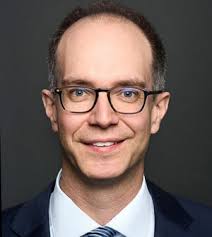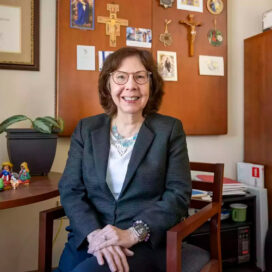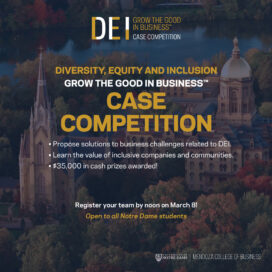Ball clubs’ economic payoff for communities is no sure thing
Published: November 11, 2006 / Author: Scott Johnson
As South Bay fans cheer the prospect of the San Francisco 49ers playing in Santa Clara and the Oakland Athletics moving to Fremont, two things seem certain: Boosters will tout economic benefits, and skeptics will warn that team owners will be the prime beneficiaries, potentially at taxpayers’ expense.
Professional sports often infuse vitality and pride into a community. But a significant economic payoff for the community is more a long shot than a sure thing, say economists who have conducted cost-benefit analyses of such developments across the country.
Fans “should withhold their enthusiasm until the time when negotiations are completed,” said Stanford University economist Roger Noll, who has studied several stadium deals. Noll said that when he saw Santa Clara Mayor Patricia Mahan on TV, “I was convinced seeing her smile that this was before negotiations started.”
Even Santa Clara County Assessor Larry Stone, an unabashed sports booster, acknowledged that stadium deals may not pencil out financially, but enhance community spirit in a way that can’t be captured on a spreadsheet. “Proponents of ballparks and stadiums tend to overstate the direct economic benefits and it gets them into trouble every time,” he said.
Pro sports and new stadiums stimulate ancillary economic activity, creating jobs, retail sales and additional tax revenue. But the impact varies on a case-by-case basis, experts say, and must be measured against quality-of-life effects such as traffic jams.
“We now have a lot of experience that the economic and financial case advocates muster for these things isn’t there,” Noll said. “It’s a will-o’-the-wisp.”
Noll and collaborator Andrew Zimbalist, in a 1997 study, cited Baltimore’s downtown Oriole Park at Camden Yards as “probably the most successful” venue for attracting outsiders to spend money in the city. “Even so, the net gain to Baltimore’s economy in terms of new jobs and incremental tax revenues is only about $3 million a year — not much of a return on a $200 million investment.”
By contrast, the economists wrote, boosters often claim franchises have much greater impact. One such report put the combined benefits of Cincinnati’s Bengals and Reds at $245 million. “Such promotional studies . . . confuse gross and net economic effects,” Noll and Zimbalist wrote. “Most spending inside a stadium is a substitute for other local recreational spending, such as movies or restaurants. Similarly, most tax collections inside a stadium are substitutes: As
other entertainment businesses decline, tax collections from them fall.”
More recently, Noll said, promoters of San Diego’s downtown Petco Park baseball stadium said it would enliven the nearby historic Gaslamp District; in fact, game-day traffic jams have depressed Gaslamp business.
Much of the community impact hinges on the cost to the public. Carol McCarthy, Santa Clara’s deputy city manager, said it’s not clear what sort of public concessions might be sought for a 49ers stadium in Santa Clara on city-owned land that is now under lease to Paramount’s Great America. “Right now they say no new taxes and no impact to the general fund,” McCarthy said.
Both the York family, which owns the 49ers, and the Wolff family, which owns the A’s, have been frustrated in efforts to join the wave of pro franchises that have abandoned antiquated facilities for modern venues that are designed to maximize revenues, with luxury boxes, restaurants and retail outlets. Corporate naming rights can be particularly lucrative.
Such moves substantially enhance the re-sale value of the franchise. “They want to race toward a stadium that generates a tremendous amount of revenue, but a tremendous amount of revenue they want to keep,” said David Carter, executive director of the USC Sports Business Institute.
Communities that coveted pro franchises in the 1980s and ’90s often endorsed heavy subsidies from the public. “When you look at the recent 20-year-plus history of franchise movement,” Notre Dame University economist Richard Sheehan said, “the cities that get them end up shelling out a fairly large amount for the privilege of hosting the franchise.”
But California voters have shown a reluctance to subsidize pro sports. On Election Day, Sacramento voters trounced a tax to build a downtown arena, and Pasadena residents rejected a plan to entice a pro football franchise for a redesigned Rose Bowl.
Enclosed downtown arenas such as the HP Pavilion generate the most economic energy because they can be used for different sports as well as concerts, circuses and other events. Dean Munro, executive director of the San Jose Sports Authority, said a study by his group five years ago concluded that about 100 events held at the downtown arena generated about $125 million for San Jose, for such things as hotel and restaurant spending. But it’s unclear how much came from outsiders who otherwise would not be spending the money within the regional economy.
Noll and Sheehan said a Fremont baseball stadium would generate more financial impact on the community than a Santa Clara football venue because, at a minimum, it would host 81 home games a year. Moreover, “Cisco Field” is envisioned as an anchor for a larger complex that would include stores and housing. A football stadium, even counting pre-season and playoffs, may host only a dozen pro games a year.
The prospect of the A’s competing in an ultra-modern Cisco Field appears much more likely than the San Francisco 49ers of Santa Clara, Noll said. The involvement of Cisco, which controls the property eyed for a baseball park, is a critical factor. Meanwhile, the 49ers re-opened talks Friday with the city of San Francisco.
Sports business experts say it’s wise for the 49ers to seriously negotiate with both San Francisco and Santa Clara to get the best deal possible. San Francisco seems determined to drive a hard bargain, in part because the Giants received remarkably little public subsidy — $15 million — in building the downtown waterfront ballpark now known as AT&T Park. Aesthetically, politically and economically, it is widely considered a home run — perhaps a nice splash in McCovey Cove.
If San Francisco and the 49ers can’t find common ground at Candlestick Point, Santa Clara may well prove a more lucrative alternative. But if they do, Santa Clara may wind up feeling jilted and used.
“My guess is that the A’s deal will probably happen,” Noll said, “and the 49ers deal probably won’t.”
###
/news_and_events/news_articles/article/3519/ball-clubs-economic-payoff-for-communities-is-no-sure-thing




